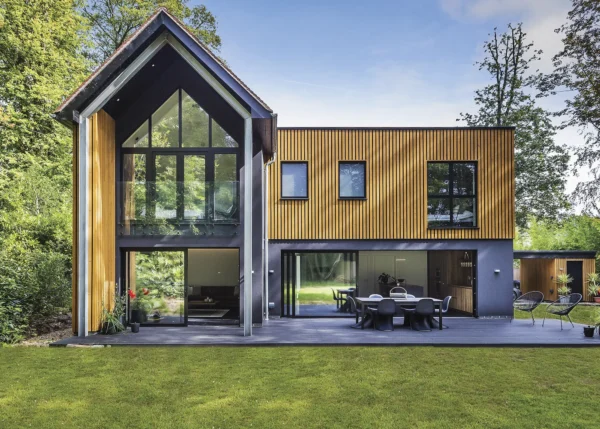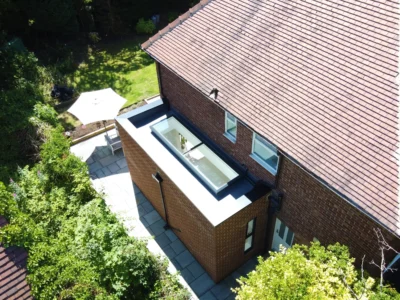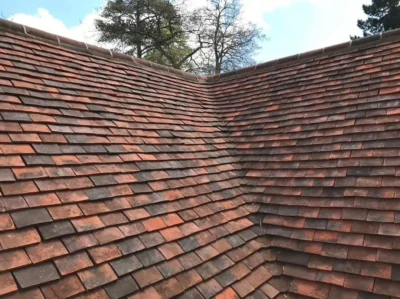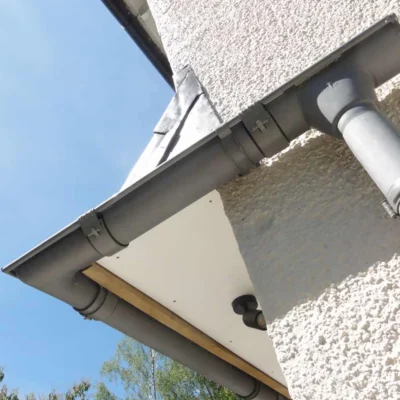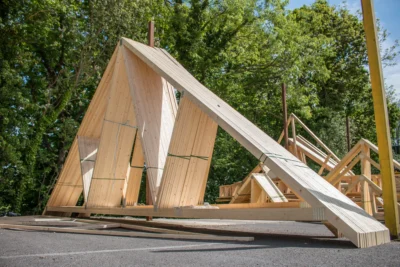Water Efficient Homes: How to Save Water
Water efficiency and good drainage are both very important factors to consider when beginning your build. Although, with so much focus on energy efficiency and reducing the cost of heating and electricity bills, it can be easy to forget that the water-based systems in our homes also impact the environment.
These impacts however, can differ from place to place. For example, in the south east of England there’s a high concentration of people and an equally high water demand, yet rainfall is the lowest in the UK. By contrast, in the south west there’s plenty of rain but flooding is a regular problem, which makes sustainable drainage essential.
The point is that sustainability is a relative term. So, what you need to address for your specific project depends on where you’re building and what you’re trying to achieve.
We can often rely too much on the effective distribution of a mains supply and lose focus on the issues this could be creating for future communities. So, with its flexibility, the building stage is the best place to begin making changes to our living habits, helping to prevent issues for both ourselves and the environment.
How Much Water Do I Use?
Water use varies from one household to another. A commonly quoted figure is that the average person uses 150L of water per day. For larger households, this figure drops as more services such as dishwashers are shared.
Plenty of free calculators are available online to help you work out your daily/weekly/annual use – but the pie chart below, supplied by the Energy Saving Trust, gives a typical breakdown of yearly usage. Households with a water meter tend to consume less as there is a direct connection between volume of water used and the bills.
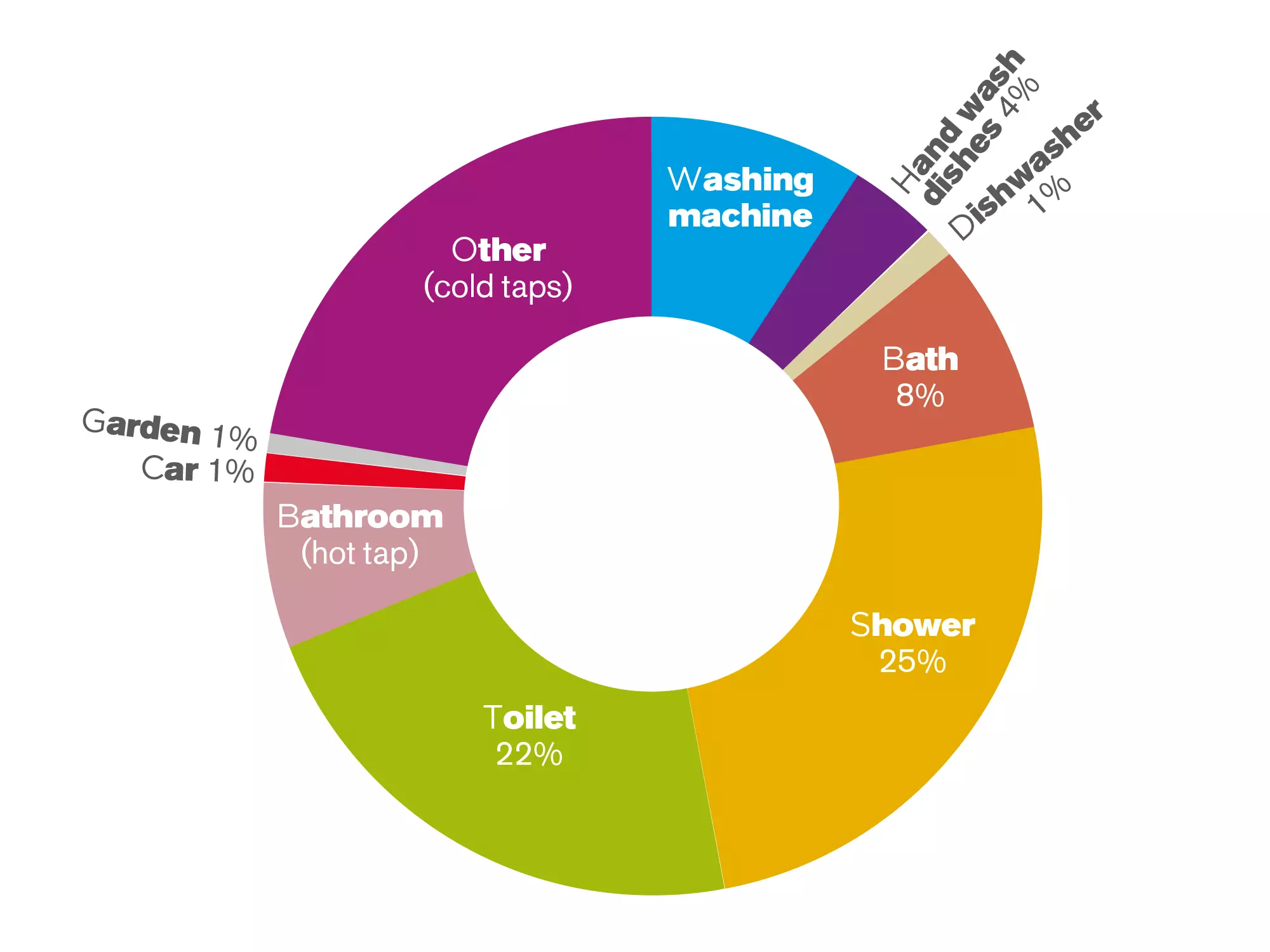
Graph showing water consumption by use. Source: Energy Saving Trust
There are various ways to achieve savings. For instance, you could switch some appliances to more efficient modern versions, or make changes to your habits and lifestyle. Sometimes, households manage a combination of the two approaches.
It’s clear from the chart that over half of total water use in the average household is accounted for in the bathroom, so this is the place to start when looking for savings. But first things first – before you buy new loos and smart showering products, make sure you fix any leaks. A dripping tap or cistern overflow can waste a surprising amount of water.
Of course, there’s plenty more you can do, so here are some of the best options:
1. Water-Efficient Toilets
Older single-flush WCs use at least 9L of every time you pull the handle. Most modern WCs are dual-flush, and use either 6L or 3L/4L depending on which option you select. Some super-efficient versions can get this down to 4L/2L.
If you still have an old cistern, then installing a displacement device inside is one option to reduce the volume.
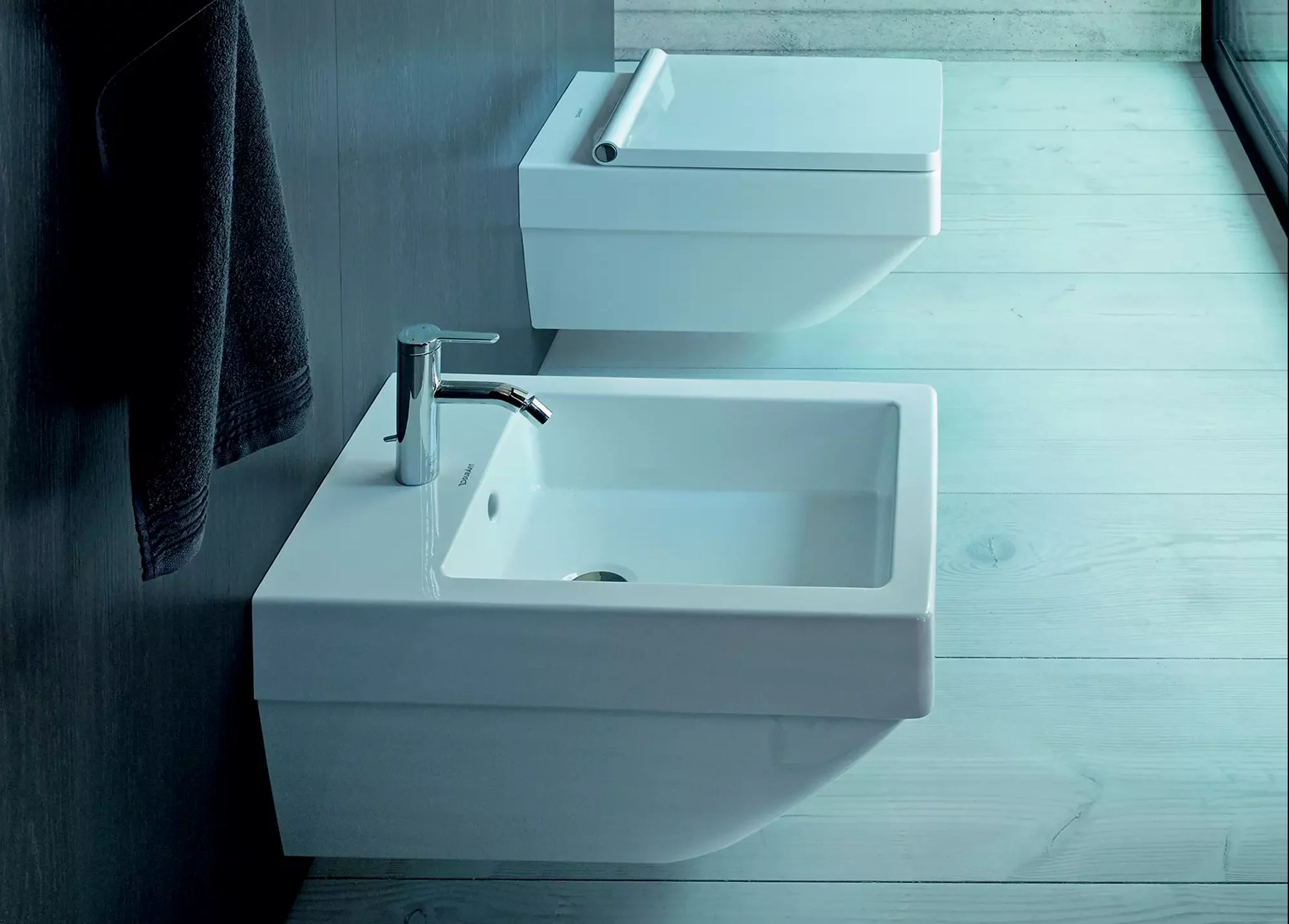
Duravit’s Vero Air WC features a rimless design, which enables a powerful flush at a volume of just 4.5L
It’s worth being aware that, as soon as the flush commences, water starts to re-enter the cistern. This means that actual volume used can exceed the stated amount.
One way to avoid this is to install a delayed-action inlet valve, which means the cistern will only start to refill once the outlet valve closes. Over time, this builds to quite a significant saving in water usage and cost.
2. Bathing & Showering
It’s known that showers commonly use less water than baths – but it isn’t necessarily so. Shower water consumption depends on both the products power and how long you spend in it. So, a five-minute cleanse at 6L/min will use 30L; whereas a 10-minute power shower at 15L/min will use 150L.
By contrast, a bath might use anything from 60L upwards – but there’s no time limit on how long you can soak for.
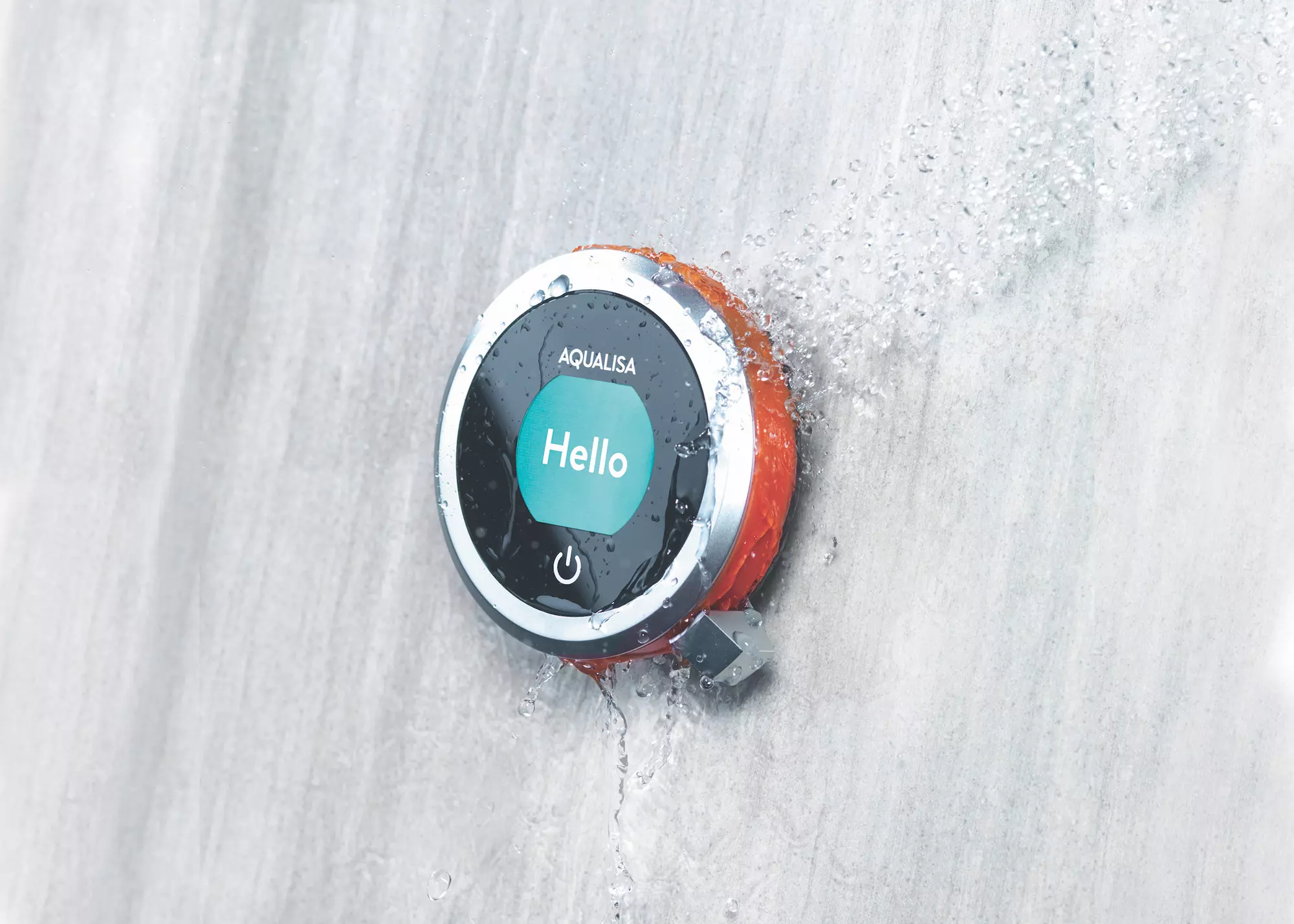
The Aqualisa Q smart shower gives you complete control over temperature, flow rate, outlet and time – so you have the power to save energy and water
Low-flow devices typically run at 6-8L/min and increase the feeling of power by introducing air into the shower head. Another thing that works well is a shower timer, which encourages good habits.
This can be particularly useful where there’s competition for the bathroom in the mornings, plus it’s much cheaper than buying a low-flow head. For new builds or major renovations, consider a shower with a digital timer.
Bear in mind that any savings on these activities will not only reduce your water bills, but can also save on energy – as it costs money to produce hot water.
Renovating your bathroom? Read our Complete Guide to Bathroom Design
3. Appliances
Washing machines and dishwashers have become much more water-efficient in recent years. This is primarily because there has been a strong drive to reduce their energy use – and as the energy is mostly used for heating water, the volume of liquid used has also fallen.
As long as your appliances are relatively new, they should be pretty efficient. The best way to save water here is simply to wash things less often – but again, this is a lifestyle decision.
4. Rainwater Harvesting
Rainfall can be harvested, safely stored and used for tasks such as flushing WCs. These systems aren’t cheap (expect to pay in the region of £2,500 for a typical setup) so you need to be saving quite a lot of water to justify the installation on cost grounds.
Check your utility provider’s water usage calculator and the price per m3 to do the sums on whether it might work for you.
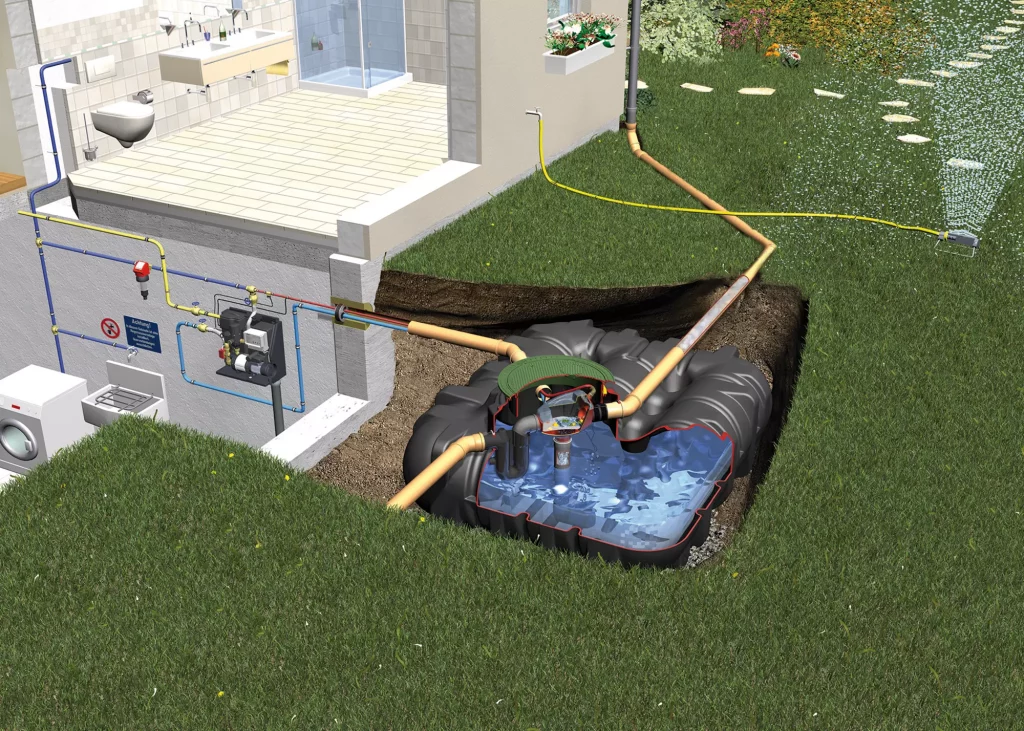
Graf UK’s Platin rainwater harvesting package with in-built self-cleaning filter was awarded a Waterwise UK Water Efficiency Product Award in 2017
Outside of the pure mathematics, instinctively it feels wrong to use drinking-quality water to flush waste, as whilst it rains on our houses this potential resource is going straight into the drains.
Some of you may be considering grey water systems to recycle the waste from sinks, showers and baths. However, it’s worth noting that these are much more complex than rainwater harvesting setups – so the environmental impact of installing them is higher.
Read More: How to Recycle Rainwater
5. Water Use in the Garden
The first thing that leaps to mind for most people when it comes to reducing consumption in the garden is water butts. These can certainly help, but the majority of outdoor water use is for lawns – and it’s when a hosepipe is left on for a long time that the highest wastage occurs.
Lawns will turn brown in a drought, but they don’t die and they’ll soon green up again when it rains; so ask yourself whether keeping your grass green is essential.
In fact, once established, most plants will survive without artificial watering. And in general, vegetable beds and hanging baskets are best watered by hand – which means the actual usage should be very low.
Sustainable Drainage
The supply of water is only half the story; it also needs to be taken away from our houses. Most systems that connect to the public drainage system are combined, so sewage (including waste from baths and sinks) and rainfall (surface water) get discharged into the same pipework.
Surface water drainage is a growing issue for two principal reasons. Firstly, the frequency of heavy downpours appear to be increasing as a result of climate change. Secondly, the development of housing and commercial sites reduce natural percolation of rainfall into the ground.
Instead, it is conveyed directly into the drainage system, which can then become congested. Ultimately, these factors can increase the risk of flooding. The best way to address this is through the use of sustainable drainage systems (SuDS).
When it comes to drainage systems, the two main techniques are:
Use of permeable surfacing materials wherever possible. These can be very simple options such as gravel, or more sophisticated products like permeable block paving. My personal favourite for use in parking areas is BuildBase Civils’ EcoBlock, a mesh made from recycled materials that can stabilize flat or sloping ground and can be filled with gravel or grass.
Holding water on site and releasing it slowly into the drainage system after the rain has ceased (known as attenuation). This can be via a pond or simply a swale (low tract of land) that has a small outlet; or via special SuDS geocellular systems such as Wavin’s AquaCell or Brett Martin’s StormCrates.
People sometimes assume that rainwater harvesting or garden water butts can be used as a form of attenuation, but in reality the beneficial effect of these is minimal if heavy rain arrives.
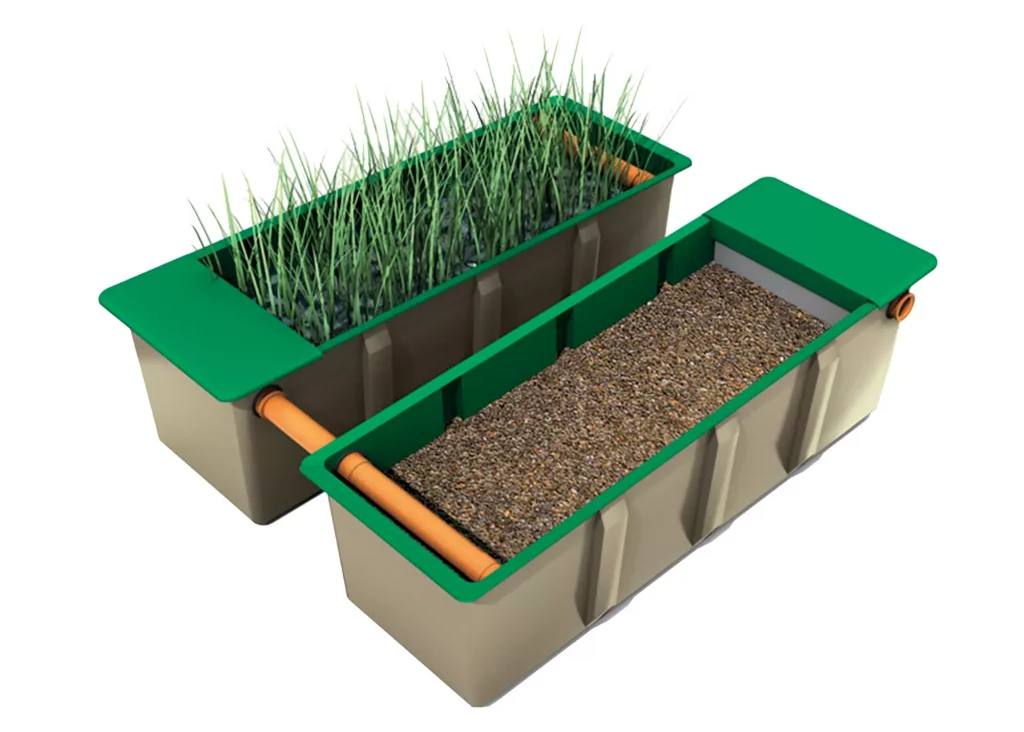
Kingspan’s Klargester reed bed combines a natural filtration process with the company’s sewage treatment system. The prefabricated, modular setup is moulded in one-piece GRP, with reeds and beds supplied, to ensure easy installation and maintenance
In terms of waste water, if you’re self building and your site can’t be cost-effectively connected to mains drainage, then you’ll probably be looking at septic tanks or a reed bed system to handle sewerage.
Properly designed, reed beds can be so effective that the eventual run-off is drinking quality water; while the ponds themselves are an ecological asset. Composting toilets are another solution for sites that have no foul sewer access, especially if there are drainage problems such as heavy clay soils. Although, this approach is perhaps still the preserve of the deep green developer.
Read More: Water Saving Systems for Sustainable Homes
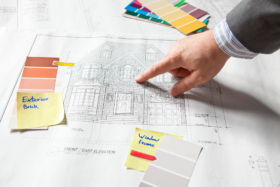
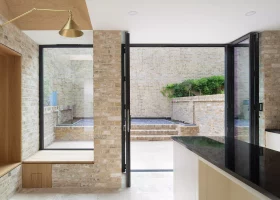































































































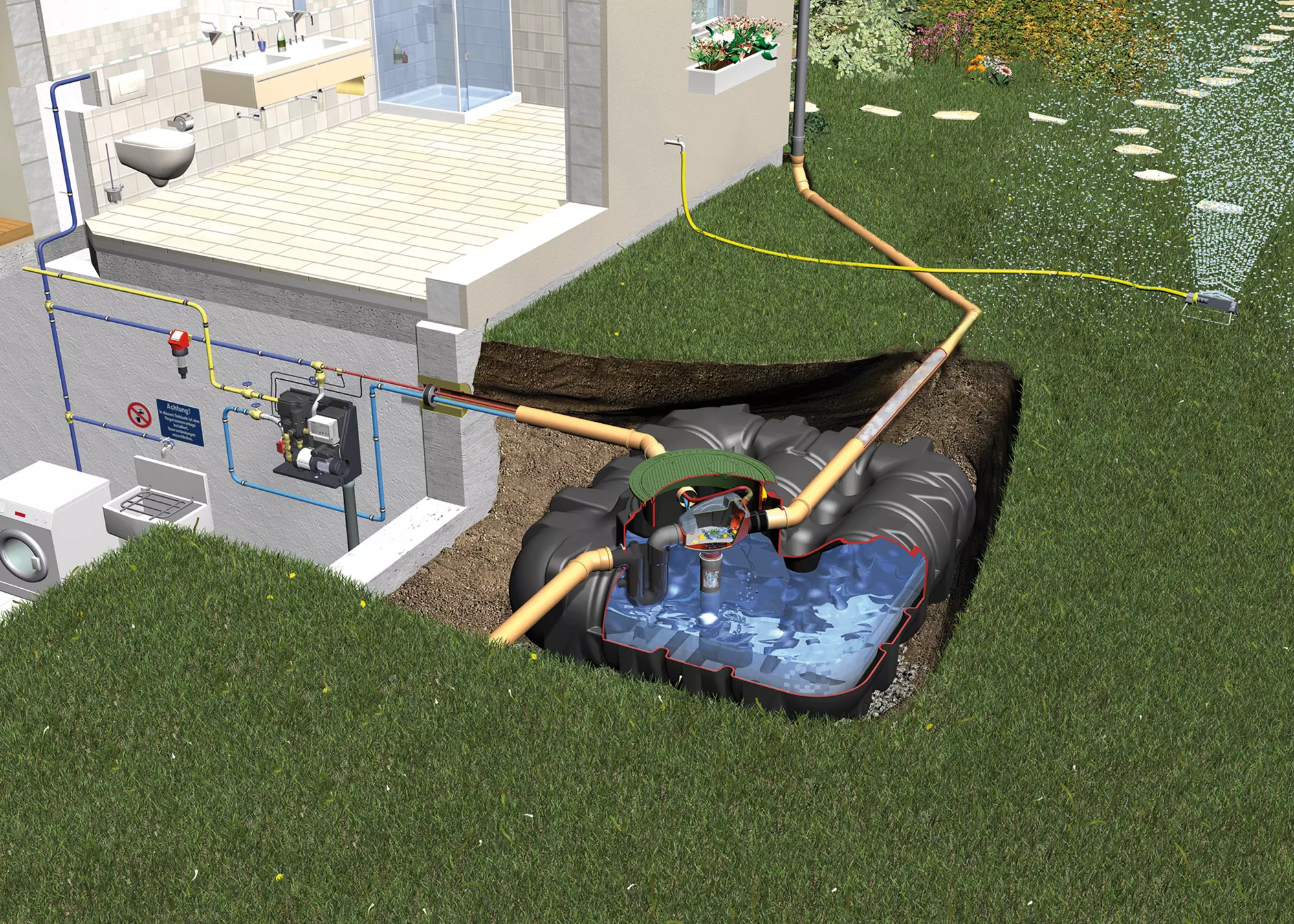
 Login/register to save Article for later
Login/register to save Article for later


